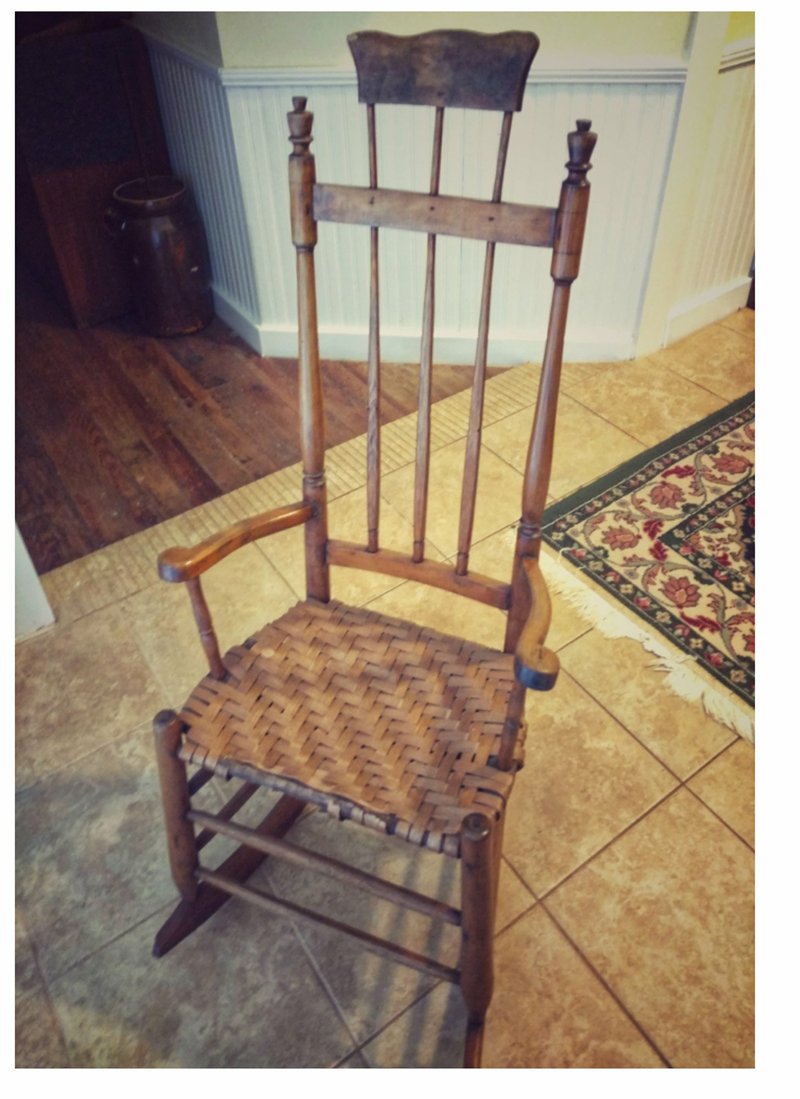DEAR HELAINE AND JOE: I recently bought this rocking chair at a consignment shop in north Georgia. I paid $98. Attached was a note reading, "1820-1860 probably New England." It is pegged and has a split oak seat. I do not know if the seat is original. Please share any knowledge you may have on such a rocking chair. Thank you.
— C.C.
DEAR C.C.: Rocking chairs are not the hottest ticket in the antiques furniture world. They are kind of a cliche that brings to mind a world that no longer exists. And they tend to take up too much room in modern homes where space can be at a premium.
That said, the chair in today's question has some pizzazz and is certainly a more interesting example than most country-made rocking chairs we see. The most serious question is whether the chair began its life as an armchair and later had rockers added or if it has always been a rocking chair.
Only an in-person examination would determine this with any certainty, but if we had to make a bet based on the photographs, we would probably go with the rockers as being a later addition. This would not be all that unusual.
We need to examine the date in the note given to C.C. when she bought her chair. We feel the 1820 to 1860 time frame is a bit optimistic. Looking at the quality of the work plus the overall design, we think it is post-Civil War with a probable date of origin in the late third quarter or early fourth quarter of the 19th century. This does not materially affect the value or detract from the interest.
We can call this a Windsor-style chair, but it is not a true Windsor because it was constructed using pegs and does not have a typical Windsor plank seat. Instead, it is an adaptation of the 18th- and early 19th-century Windsor furniture that was made in England and North America. The top on C.C.'s example has a comb back (named for what it looks like) and urn-shaped turnings on the chair's side posts. Both are interesting design features.
The comb back was probably added as a headrest, or it could have just been decorative. The scrolled arms are well made and at the right height for the seat. Now we come to the split oak seat, which appears in the photographs to be so fragile we fear it would not support the weight of a well-fed house cat.
Fortunately, this is not a big problem because the rule of thumb is such seats had to be replaced every 30 years or so. A well-done replacement seat would not hurt the value significantly (unless the new seat looks too fresh and incongruous and is jarring to the eye). We have no idea where C.C. lives, but if it is in the north Georgia area (Tennessee, Alabama, North Carolina), she should have no trouble finding a craftsman to do a proper job of crafting a new split oak seat. Insurance replacement value with a new seat is in the $175 to $225 range.
Helaine Fendelman and Joe Rosson have written a number of books on antiques. Do you have an item you'd like to know more about? Contact them at Joe Rosson, 2504 Seymour Ave., Knoxville, TN 37917, or email them at [email protected]. If you'd like your question to be considered for their column, please include a focused high-resolution photo of the subject with your inquiry.
HomeStyle on 04/20/2019

